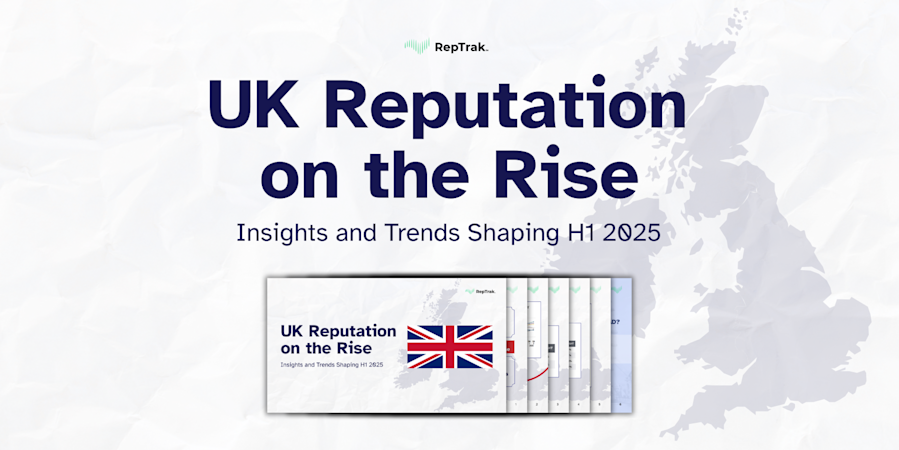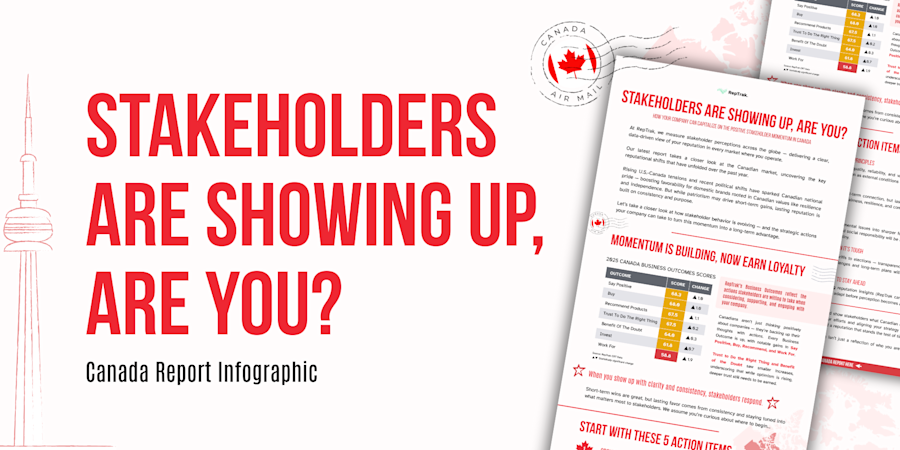Key Brand Reputation Metrics for Improving Business Communication
Blog Post30 Jan, 2021
Every day, the public interacts with your brand across a variety of communications touchpoints. This includes your social media, website, emails, etc. Each interaction is a chance to change someone’s mind about your company and products (i.e., your brand reputation), and those changes ultimately determine profitability.
Surprisingly, interactions between companies and the public have decreased over the past six months. From December 2019 through March 2020, 69% of the public interacted with companies across at least one of their key touchpoints. As COVID-19 lockdowns ramped up, slightly more of the public (70%) interacted from April to June. But then this number dropped to 64% from July through November.
If you think about the challenges faced by the world — the need for information amid constant changes — you might assume those touchpoints would have increased. After all, more than 75% of people want companies to talk about what they can do to help them, and 70% want to be reassured by those companies. People seem to want more interactions with brands, but the opposite is happening. Where’s the disconnect?
The Importance of Business Communication and Consumer Interactions
According to a New York Times article, people are so starved for interactions that they’re taking calls they used to avoid like the plague (aka telephone surveys). What does this mean with regard to the decrease in company-consumer interactions? People want to interact, but companies aren’t engaging people the right way. We discovered that no industries saw increased levels of interaction — even the pharmaceuticals industry remains steady at 61% (compared with 62% before the pandemic).
Of course, some industries ground to a halt because of the pandemic. Because of quarantine restrictions, many people stopped traveling and tried to change or cancel their reservations. The hospitality and transportation industries saw similar decreases in engagement from 71% to 55% and 72% to 50%, respectively.
But even though business trickled away, companies should have kept communicating with the public. For example, airlines saw a 28 percentage point decrease in brand engagement, but their social media posts also dropped 13 percentage points from January to December 2020. Fewer people might have been flying, but airlines implemented plenty of safety-related changes they could have communicated.
The disconnect is in companies’ brand communication. Even though people want information and updates during the pandemic, it appears that companies simply aren’t connecting with the public. Sure, companies aren’t communicating enough — but people also want them to communicate in different ways. Given the sweeping changes society has endured over the past year, it’s reasonable to expect companies to alter their communications as well. If you want to see interactions increase, you’ll have to figure out how to improve your business communication.
What Metrics Can Tell You How to Connect With the Audience
The year 2020 was challenging for everyone: Widespread unemployment, political and social unrest, and increased COVID-19 cases added stress to people’s already hectic lives. Consumers want brand communication that acknowledges current struggles, talks about others’ welfare, and addresses possible solutions.
By practicing effective business communication, you can improve your brand reputation and business outcomes. When people view your company in a positive light, they’ll be more likely to continue interacting with you and making purchases. To figure out what messaging adjustments will better connect with your audience, you’ll need to figure out how they currently perceive your company and business communication. To help you out, we’ve identified two brand reputation metrics to measure throughout 2021:
1. Brand Expressiveness
Do you know whether your company is successfully communicating its mission and purpose? Don’t worry — that’s what your brand expressiveness score can tell you. This metric looks at how often you communicate, what values and beliefs you share, and whether your company welcomes open discussion (among other things).
These elements shape the public’s perception of your brand, which directly affects your company’s performance. Suppose you only post on your social media once a month about something unrelated to your products. People who come across your account won’t have any idea who you are, what you do, or why they should stick around. And if they don’t stick around, they aren’t likely to buy anything.
To increase your brand expressiveness score, make sure you’re sending the right messages to the right people at the right times. At the moment, this means communicating how your brand is improving society as a whole. Talk sincerely about your internal efforts regarding remote work, like Google, or announce your partnerships with charities or nonprofits, like Twitter. The more communicative you are about your brand’s purpose and mission, the better your corporate reputation will be. Just remember that you don’t have to be serious all the time — you can joke about 2020 like the online dating website Match did in its ad “Match Made in Hell.”
2. Brand Persona
What is a brand persona? Think of it as your company’s personality — the human traits people associate with your brand based on your business communication (not your logo design or color schemes). Some brand persona examples include friendly, caring, straightforward, fair, and confident. You might also be described as tough, brash, or aggressive, depending on how you portray your brand.
If you have a brand persona that your audience can’t relate to, then you’ll see fewer interactions and need to work on your business communication. It’s almost like a human conversation: The phrase “spill the tea” means very different things to Gen Zers and Baby Boomers.
We discovered that having any brand persona (including a nontraditional one like greedy or arrogant) is better than not having one at all. That’s because people need to know something about your company before they can form an opinion; a big part of getting to know a company is through its personality. People might still engage with your brand even if you have a nontraditional brand persona, but they won’t know anything about you if you’re not communicating enough to invoke emotions. People want your brand to feel human.
These two metrics can tell you how to improve your business communication strategy to connect with your audience, increase interactions, and improve business outcomes. The resulting insights you glean will lead to more effective business communication in 2021. The new year is about recovery and growth for companies and their customers, so we all need to remember to be gentle with each other.
Looking for actionable ways to improve your business communications? Check out our recent blog post for advice on connecting with a global audience this year.






